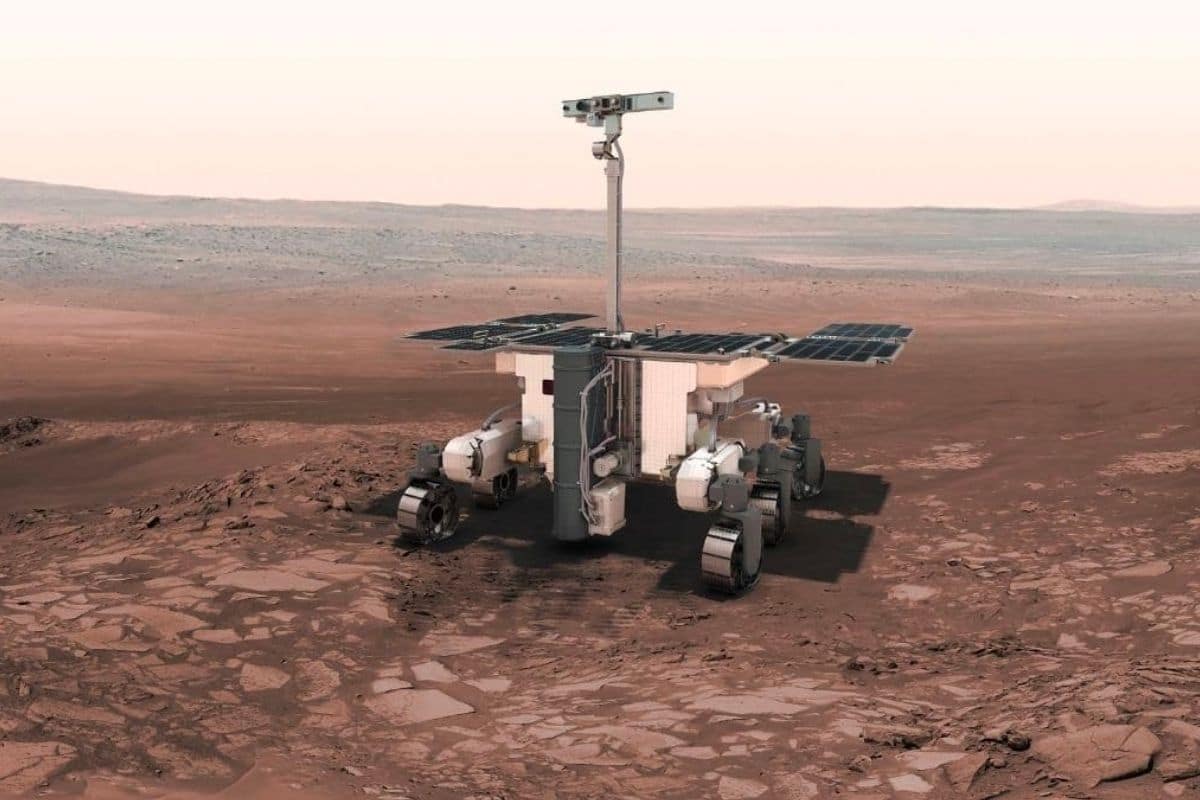
Partly due to the sanctions imposed on Russia, it is very unlikely that the European Mars rover Rosalind Franklin will be launched in 2022.
This has been announced by the European space agency ESA in a short statement. Should the launch indeed not go ahead, it will be the second time that the launch of ESA’s Mars rover has been postponed. That already happened in 2020. The postponement was then partly prompted by the corona crisis.
War
This time it is not a health crisis, but a war that throws a spanner in the works. The Mars rover Rosalind Franklin is part of the ExoMars mission in which ESA works closely with the Russians. For example, in addition to the European Mars rover, the mission also consists of a Russian Mars lander named Kazachok. The two would travel to Mars together after launching on a Russian launch vehicle. Once there, the rover would, among other things, start hunting for traces of life, while the lander would conduct research into the climate and atmosphere of Mars, among other things.
stumbling block
Where the bundling of European and Russian forces long seemed a plus, it has now become a stumbling block. Over the past week, European leaders have strongly condemned Russia’s invasion of Ukraine and punished it with far-reaching sanctions. As a result, the relationship between ESA and Roscosmos has also come under pressure. Putting that aside, the sanctions in themselves make it very difficult to cooperate with the Russians.
2024?
And ESA does not see it happening that Rosalind Franklin and Kazachok will be launched this year. That launch was scheduled for September 2022, after which both would set foot on Mars in the spring of 2023. If the launch is actually delayed, it could be 2024 before the rover and lander take to the skies. Because the best time to send a space mission to Mars is when Mars and Earth are relatively close to each other (so the journey doesn’t take as much fuel and time). And that moment occurs roughly once every two years. That is why the launch postponed in 2020 by COVID was also postponed directly to 2022.
spaceport
ExoMars is certainly not the only space mission that will be affected by the war in Ukraine. Earlier this weekend, the Russians announced that they would completely withdraw from the spaceport that ESA uses in French Guiana, where the rockets of ESA and the French company Arianespace are launched, in response to the sanctions imposed by Europe. . The latter company also regularly launches Russian Soyuz rockets from this spaceport, carrying Galileo satellites (part of the first civilian satellite navigation system that ESA is building in cooperation with the EU) and Earth observation satellites (such as the satellites from the Copernicus programme). But because the Russians are withdrawing from the spaceport, launches with a Russian rocket are not possible in the short term and that could just lead to the postponement of planned launches. ESA is aware of that risk and has already indicated that it is looking at alternative launchers.
Venera-D
But it is not only ESA that is busy evaluating the consequences of the war in Ukraine. NASA has also had to say goodbye to a space mission due to the situation in Ukraine. Earlier, the Russians, through Dmitry Rogozin – boss of the Russian space agency – said they found it inappropriate to continue working with the Americans on the Venera-D mission. This mission should reach Venus by the end of this decade and was set up by the Russians. But in 2014, the Americans were asked to think along and also to develop some scientific instruments. That collaboration has therefore been discontinued for the time being.
And then there is of course the International Space Station, a project in which the Russians and Americans have been joining forces for years. For the time being, this cooperation continues, although some threats have already been made from the Russian side about ending that cooperation. A few years ago, those threats could have terrified the Americans, but now the Americans are no longer as dependent on the Russians as they were then. For example, there are several American space companies that can transport supplies and crew to and from the ISS, if necessary. And those commercial spacecraft could theoretically also give the ISS the occasional push it needs to stay in orbit. And with that, Rogozin’s recent threats that the ISS is doomed to fall uncontrollably if the Russians pull their hands off it have lost their power.
Source material:
†ESA statement regarding cooperation with Russia following a meeting with Member States on 28 February 2022” – ESA
Image at the top of this article: ESA / ATG media lab